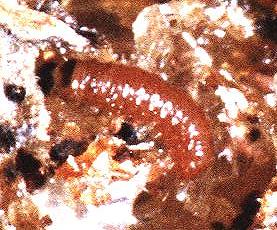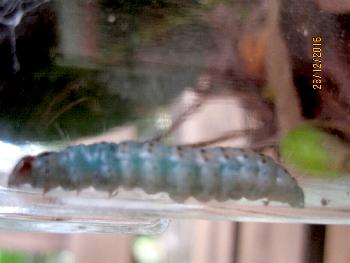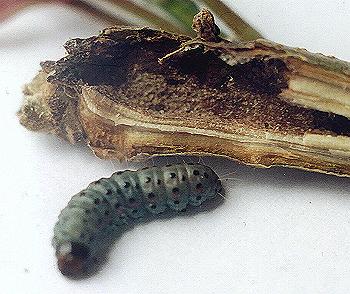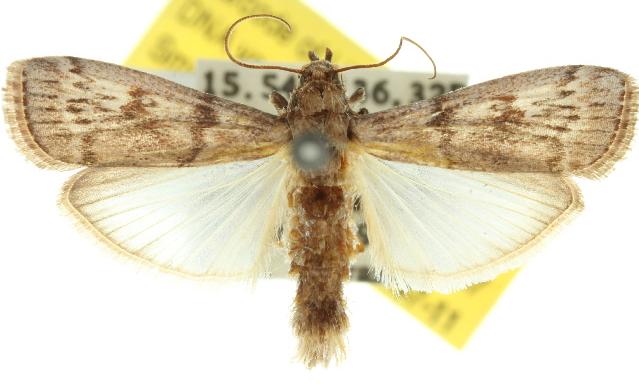
| Cedar Tip Moth (one synonym : Epicrocis terebrans Olliff, 1890) PHYCITINI, PHYCITINAE, PYRALIDAE, PYRALOIDEA | (donherbisonevans@yahoo.com) and Stella Crossley |

red form
(Specimen: courtesy of Maryclaire Fisher,
Kempsey, New South Wales)

| Cedar Tip Moth (one synonym : Epicrocis terebrans Olliff, 1890) PHYCITINI, PHYCITINAE, PYRALIDAE, PYRALOIDEA | (donherbisonevans@yahoo.com) and Stella Crossley |

red form
(Specimen: courtesy of Maryclaire Fisher,
Kempsey, New South Wales)
The Caterpillars of this moth vary from reddish through grey to greenish to blue. The head is dark brown, and there is a black patch on the prothorax. The body has raised black spots on each segment.

The caterpillar is a pest in Australia on :
and overseas on
The species population is maintained in the wild on :

The caterpillars destroy the apical shoot, leading to the formation of side branching, and ultimately, a deformed trunk. It is possible that the caterpillars prefer to eat the pith in the stem rather than eating the leaves because the plant manufactures chemicals in the leaves that deter phytophagous insects. The species has been investigated by David Spolc at the University of Queensland, J. H. Mo, Fyfe Bygrave, and Saul Cunningham at the Australian National University, Canberra.

The species is said only to attack trees in the light. Young small trees growing in the understory of a rainforest are not attacked. Young small trees planted as a plantation get more light and so are attacked, making cultivation of the valuable timber tree, the Red Cedar, rather difficult.

The adult moths are rather dull: brown forewings and buff hind wings, both with dark veins. The forewings also have a faint zigzag pattern. The wingspan is about 3 cms. The pheromones of this species have been identified.

Control of the pest is being attempted by :
Hypsipyla robusta occurs widely around the tropics, including
as well as in Australia in
The name Hypsipyla robusta seems to be applied to a group of similar species. Further work is needed to clarify this.
Further reading :
M.W. Griffiths,
The Biology and Ecology of Hypsipyla Shoot Borers,
In R.B. Floyd & C. Hauxwell eds.:
Hypsipyla shoot borers in Meliaceae,
Proceedings of an international workshop, Kandy, Sri Lanka 20-23 August 1996,
ACIAR Proceedings No. 97, Canberra, pp. 74-80.
Ian F.B. Common,
Moths of Australia,
Melbourne University Press, 1990, fig. 32.7, pp. 66, 350.
Frederic Moore,
The Lepidoptera of Ceylon,
L. Reeve, London, Volume 3 (1886), pp. 365-366.
 caterpillar |  butterflies |  Lepidoptera |  moths |  caterpillar |
(updated 23 February 2005, 26 January 2017, 10 April 2021)